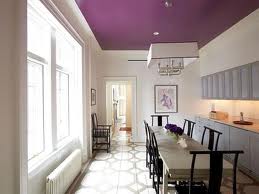 Baseboard: The baseboards of a home are from 3 to 12 inches high where the wall meets the floor. These are effective in hiding flooring with uneven edges and will help protect the walls from scuffs.
Baseboard: The baseboards of a home are from 3 to 12 inches high where the wall meets the floor. These are effective in hiding flooring with uneven edges and will help protect the walls from scuffs.Wainscoting: Wainscoting will be 36 to 54 inches high. Paneling is applied to the lower portion of the wall for decoration and to protect the wall from scuffs. Often, wainscoting is topped with a chair rail.
 Chair Rail: Typically this will be a wooden moulding placed at the height of a chair back used to protect the wall from scuffs from furniture.
Chair Rail: Typically this will be a wooden moulding placed at the height of a chair back used to protect the wall from scuffs from furniture.Cornice or Crown Moulding: Cornice is placed where the wall meets the ceiling.
Door and Window Casing: Trim around a door or window is called casing.
Moulding and trim come in various materials such as hardwood, pine, fir, or polyurethane foam. They can be prefinished and ready to install or may require staining or painting. Some may be a simple so it yourself installation while others require the expertise of a professional.
Whichever you choose, moulding or trim can be a beautiful way to complete the look of your room.



